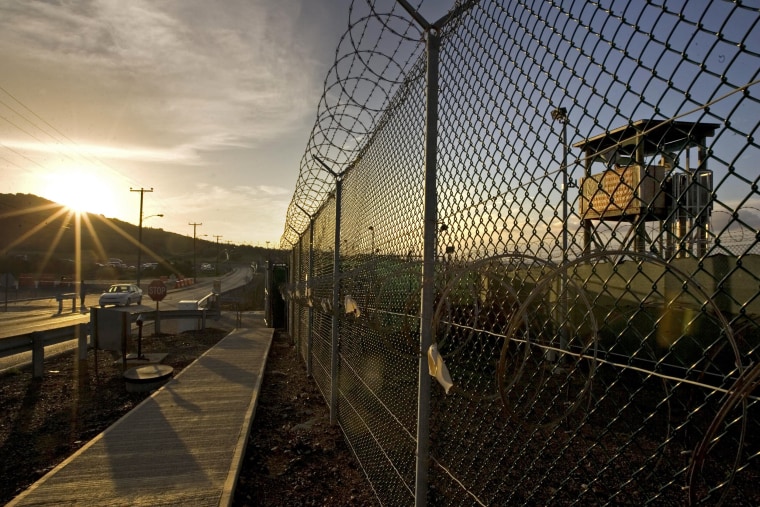As President Barack Obama's term got underway 12 years ago, he committed to closing the detention facility at Guantanamo Bay. As President Joe Biden's term gets underway now, the new Democratic administration intends to pursue the same goal. NPR reported late last week:
The White House announced Friday that President Biden hopes to shut down the prison at the Naval Station Guantanamo Bay in Cuba, a tall task that the Obama administration failed to do nearly a decade ago.... But the closure of the detention facility will take time, National Security Council spokeswoman Emily Horne told NPR.
Horne added that the Departments of Defense, State, and Justice will work with the White House National Security Council on this goal.
And though the issue isn't as high profile as it once was, it remains a goal worth pursuing. As longtime readers may recall, the prison's population peaked in 2003 with 680 prisoners. The Bush/Cheney administration began moving detainees out in its second term, and by the time Obama took office, the population was down to 242 prisoners.
Congress made it effectively impossible for the former president to close the facility altogether, but Obama successfully lowered the prison population from 242 to 41.
"As president, I have tried to close Guantanamo," Obama said in a letter to congressional leaders on his last full day in office. "When I inherited this challenge, it was widely recognized that the facility – which many around the world continue to condemn – needed to close. Unfortunately, what had previously been bipartisan support for closure suddenly became a partisan issue. Despite those politics, we have made progress."
The point of the progress, obviously, was to reduce the overall population, but it was also intended to appeal to Republicans' sense of fiscal sanity: the smaller the number of detainees, the harder it becomes to justify the massive expense of keeping open a detention facility that houses so few people.
Even if congressional Republicans are inclined to ignore every other consideration, the hope has long been that GOP lawmakers would at least care about wasteful spending: it costs American taxpayers about $13 million per prisoner, per year.
For his part, Donald Trump promised voters he'd reverse the progress, telling the public in 2016, in reference to the Guantanamo Bay prison, "We're gonna load it up with some bad dudes, believe me, we're gonna load it up."
As was true about so many of the Republican's promises, none of this reflected reality. On his first day in office, the number of inmates was down to 41. On Trump's last day in office, the prison sometimes referred to as "Gitmo" had just 40 inmates.
As for how to lower the number from 40 to zero, the plan appears aspirational for now. The New York Times reported, "[T]he plan so far is short on detail. Key players have not been appointed to the task, and officials have yet to decide who would lead the effort and whether to revive the role of a special envoy at the State Department to help relocate prisoners to other countries."
That said, as a Reuters report added, a formal review is now underway, and new executive action from the president is expected in the "coming weeks or months."

